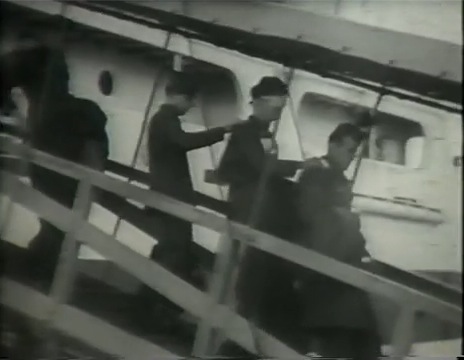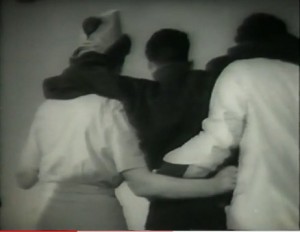Click here to print
Twenty-Five Films Added to the National Film Registry
posted December 28, 2010
Five Hundred and Fifty Film Gems Now Guaranteed Preservation

This year, 2112 films were nominated. The films are selected not because they are necessarily the “best” American films of all time, but because they are works of enduring significance to American culture. In its announcement, the Library explained: “The National Film Registry is a reminder to the nation that the preservation of our cinematic creativity must be a priority because about half of the films produced before 1950 and as much as 90 percent of those made before 1920 have been lost to future generations.”
Twenty-five films have been added to the registry each year since 1988, when the Library of Congress passed the National Film Preservation Act and established the National Film Preservation Board. The selected films must be at least 10 years old. The selections, which now number 550, are guaranteed restoration, if needed, and long-term preservation.
These Amazing Shadows, a documentary on the National Film Registry produced by Gravitas Docufilms will premiere at the Sundance Film Festival in January 2011.
Also recognized were:
A Trip Down Market Street which captured scenes from the main street of San Francisco just days before the 1906 earthquake largely destroyed them and resulted in a massive fire that worsened the destruction. The 13-minute film, made by placing a moving camera on the front of a cable car, provides “a fascinating time capsule from over 100 years ago.” It was thought have been shot in 1905 until historian David Kiehn dated it by studying contemporary newspapers, weather reports, and license plates of cars seen in the footage.
Preservation of the Sign Language (1913), a two-minute film featuring George Veditz, an early president of the National Association of the Deaf of the United States, which advocated for deaf people to sign rather than verbalize. Said the Library: “The film conveys one of the ways that deaf Americans debated the issues of their language and public understanding during the era of World War I.”
The Bargain (1914), a western that introduced William S. Hart and made him a star, and that the Library selected for “Hart’s charisma, the film’s authenticity and realistic portrayal of the Western genre and the star’s good/bad man role as outlaw attempting to go straight.”
Lonesome (1928), a romance that featured both sound and silent sections and was recently restored by the George Eastman House. IT was recognized for “its success as both a comic melodrama and for its early use of dialogue and two-color Technicolor.”
The Front Page (1931), an early sound movie that “demonstrates the rapid progress achieved by Hollywood filmmakers in all creative professions after realizing the capabilities of sound technology to invent new film narratives.”
It’s a Gift (1934), the third W.C. Fields comedy named to the registry and already the survivor, said the Library, of “a perilous preservation history.”
Make Way for Tomorrow (1937), Leo McCarey’s drama about an elderly husband and wife who are forced to live apart to save money after their children abandon them, and which The Library said “deftly explores themes of retirement, poverty, generational dissonance and the nuances of love and regret at the end of a long married life.”
Tarantella (1940), a five-minute, color, avant-garde short by Mary Ellen Bute whose work “influenced many other filmmakers working with abstract animation during the ’30s and ’40s, and with experimental electronic imagery in the 1950s.”A Tree Grows in Brooklyn (1945), Elia Kazan’s first feature film. It was, said the Library, “a timely film” that helped at the end of World War II “to remind post-war audiences of the enduring importance of the American dream.”
Also inducted into the registry were lesser-known works considered worthy of preservation such as the black independent film Cry of Jazz, Luis Valdez’s I Am Joaquin, and the 1946 documentary Let There Be Light, which John Huston made for the US government but which the US War Departent banned for 35 years for fear it would dampen recruitment. The film frankly portrayed the treatment methods – hypnosis and narco-synthesis, for example – used on “casualties of the spirit, the troubled in mind” among US servicemen seriously harmed in World War II.
The 2010 Registry additions include George Lucas’s 1967 student film, THX II38 4EB (the basis of his first feature film), as well as his 1980 sci-fi special-effects extravaganza The Empire Strikes Back; the 1980 disaster-movie spoof, Airplane!; and such exemplars of the capabilities and in several cases gawdy excesses of American cinema as Saturday Night Fever and The Exorcist.
The full list of this year’s selections (for descriptions and reasons for selection, visit the Registry’s web site):
Newark Athlete (1891)
A Trip Down Market Street (1906)
Preservation of the Sign Language (1913)
The Bargain (1914)
Lonesome (1928)
The Front Page (1931)
It’s a Gift (1934)
Make Way For Tomorrow (1937)
Tarantella (1940)
A Tree Grows in Brooklyn (1945)
Let There Be Light (1946)
Cry of Jazz (1959)
The Pink Panther (1964)
Electronic Labyrinth: THX 1138 4EB (1967)
I Am Joaquin (1969)
Our Lady of the Sphere (1969)
McCabe and Mrs. Miller (1971)
The Exorcist (1973)
All the President’s Men (1976)
Grey Gardens (1976)
Saturday Night Fever (1977)
Airplane (1980)
The Empire Strikes Back (1980)
Malcolm X (1992)
Study of a River (1996)
The Library confers with members of the National Film Preservation Board, as well as the Library’s motion-picture staff, before making its choices. Selected films benefit from restoration – if needed – and permanent preservation. To that end, the Library of Congress Packard Campus for Audio Visual Conservation, a state-of-the-art facility where the Library acquires, preserves, and provides access to the Library’s world’s-largest collection of motion pictures, television programs, radio broadcasts, and sound recordings, works with either the Library’s own extensive motion-picture preservation program or through collaborations with other archives, motion-picture studios, and independent filmmakers.
Want to nominate films for next year? You can do that online.
– Peter Monaghan
Printed from Moving Image Archive News: https://www.movingimagearchivenews.org
URL to article: https://www.movingimagearchivenews.org/twenty-five-films-added-to-the-national-film-registry/
Click here to print
